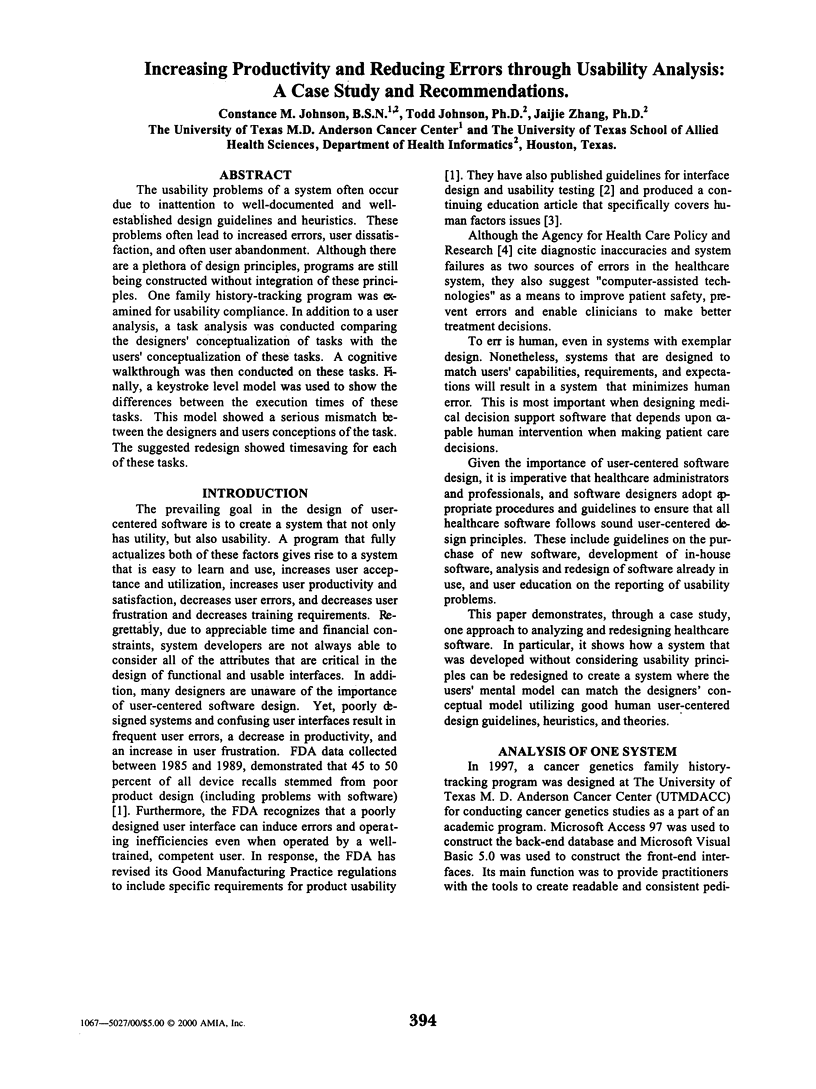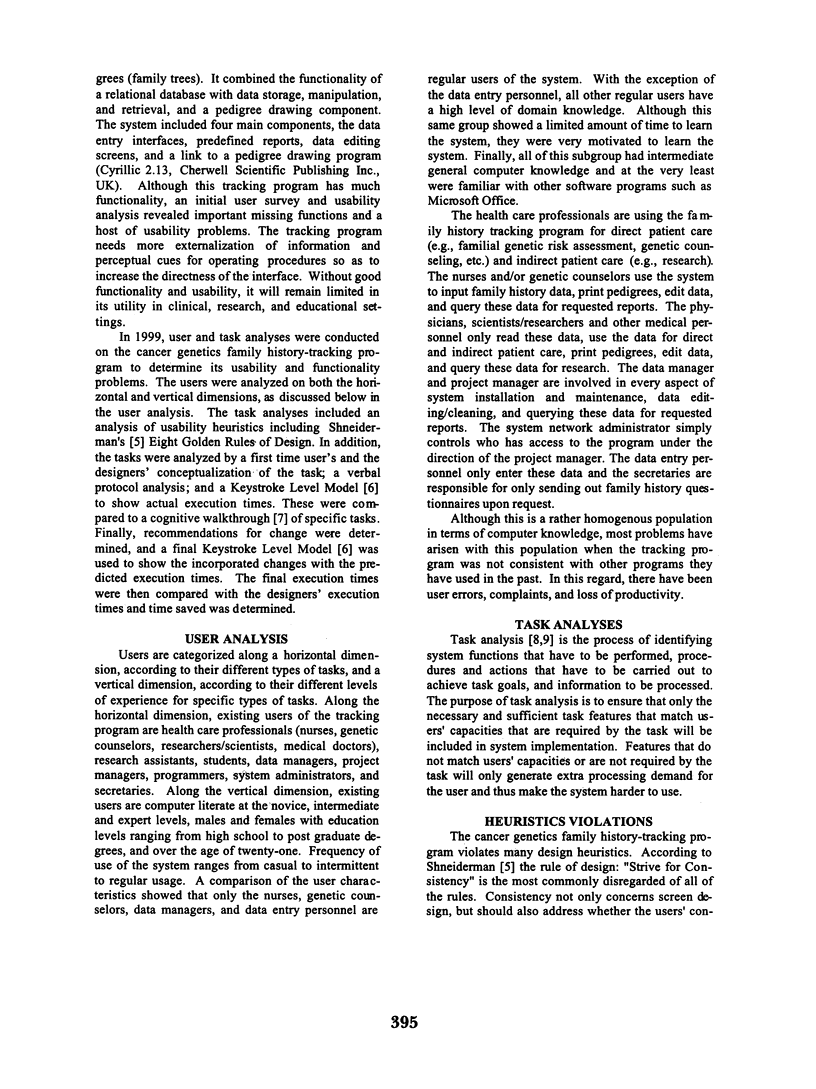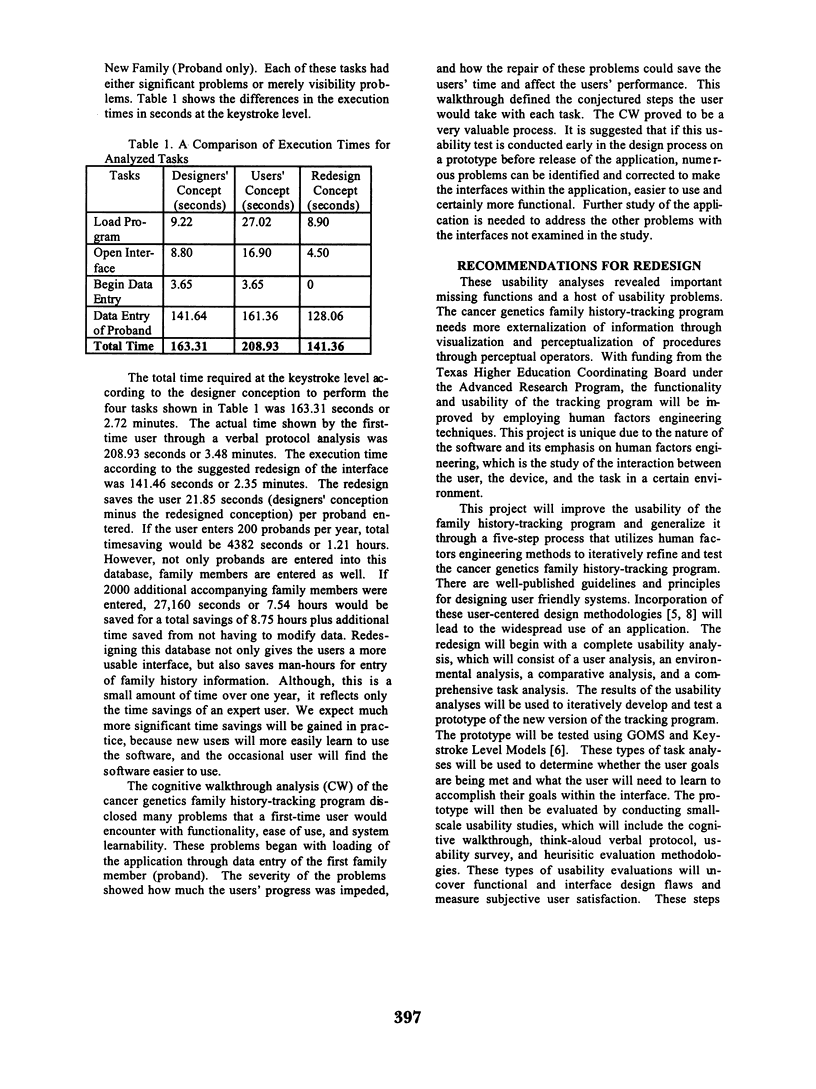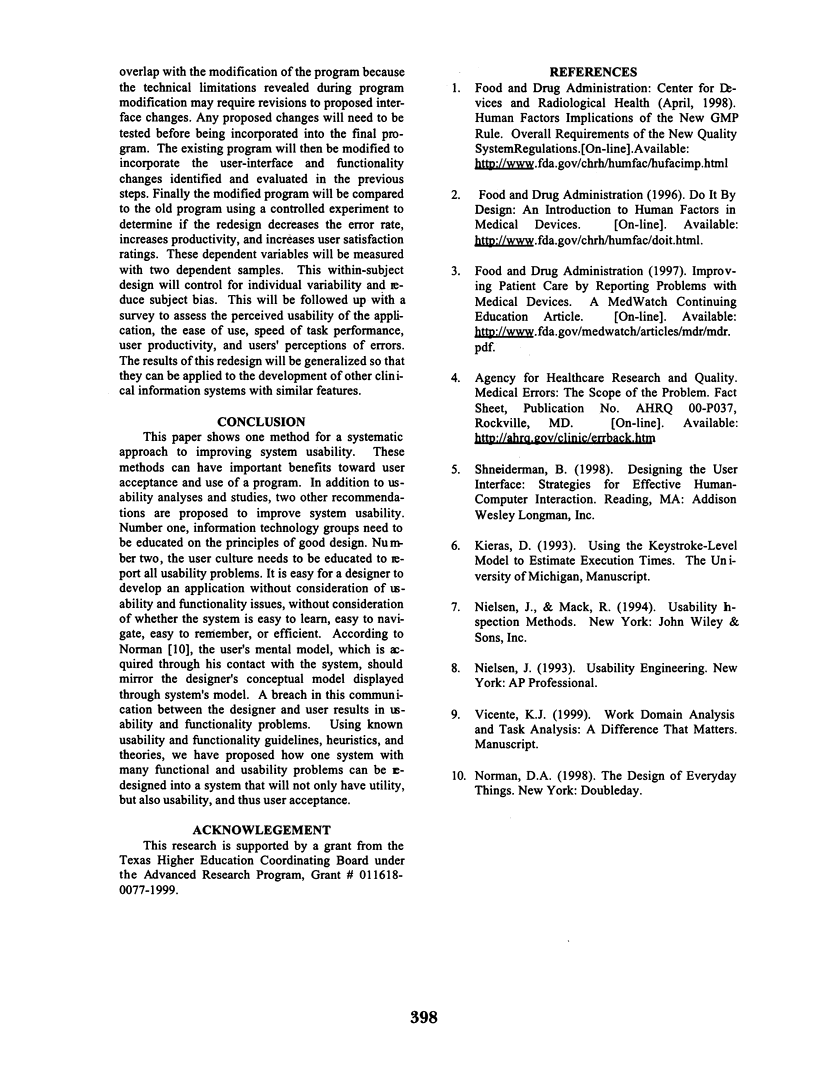Abstract
The usability problems of a system often occur due to inattention to well-documented and well-established design guidelines and heuristics. These problems often lead to increased errors, user dissatisfaction, and often user abandonment. Although there are a plethora of design principles, programs are still being constructed without integration of these principles. One family history-tracking program was examined for usability compliance. In addition to a user analysis, a task analysis was conducted comparing the designers' conceptualization of tasks with the users' conceptualization of these tasks. A cognitive walk-through was then conducted on these tasks. Finally, a keystroke level model was used to show the differences between the execution times of these tasks. This model showed a serious mismatch between the designers and users conceptions of the task. The suggested redesign showed timesaving for each of these tasks.
Full text
PDF






